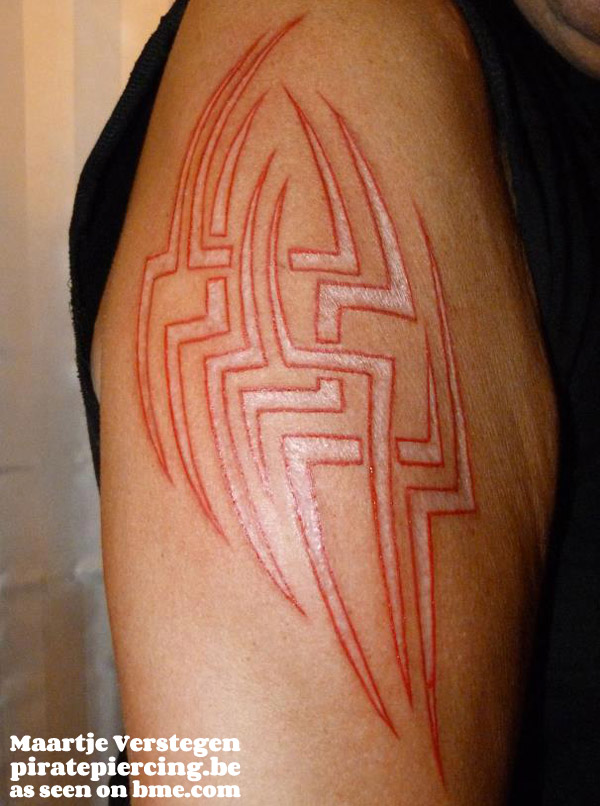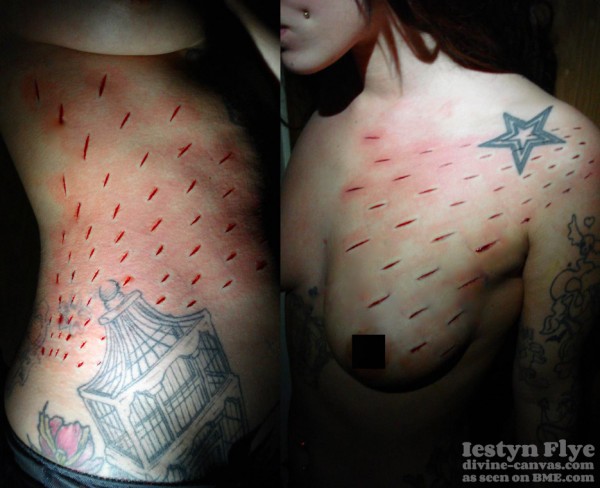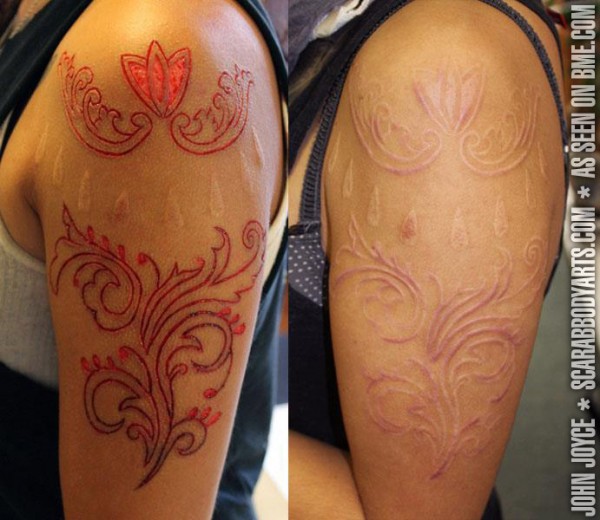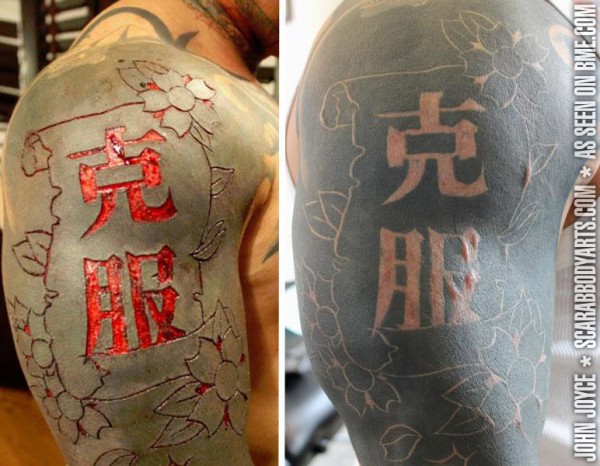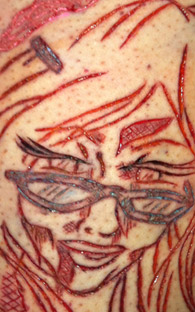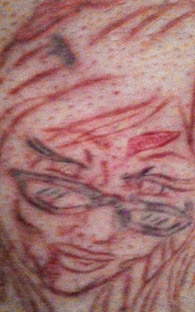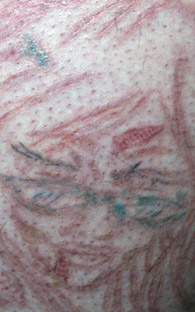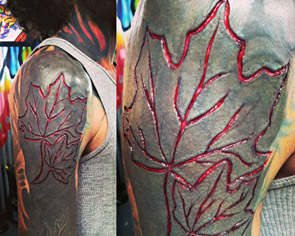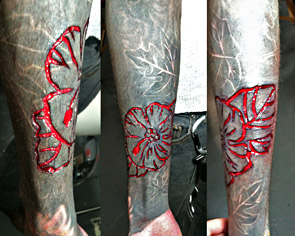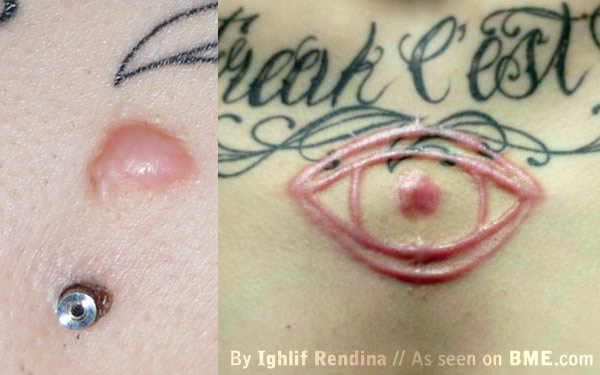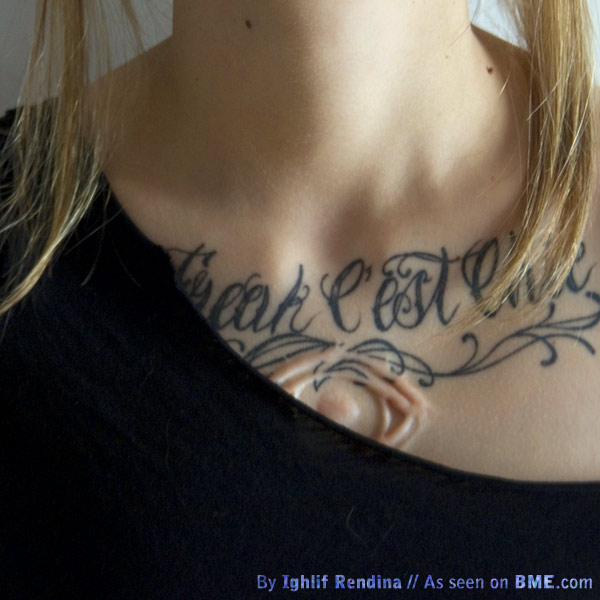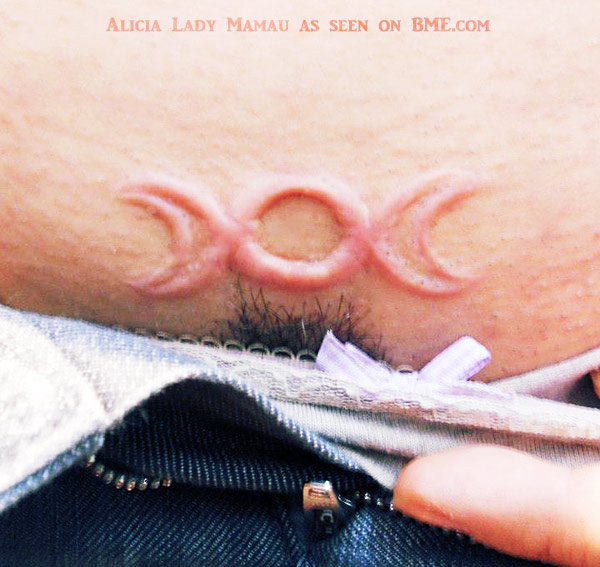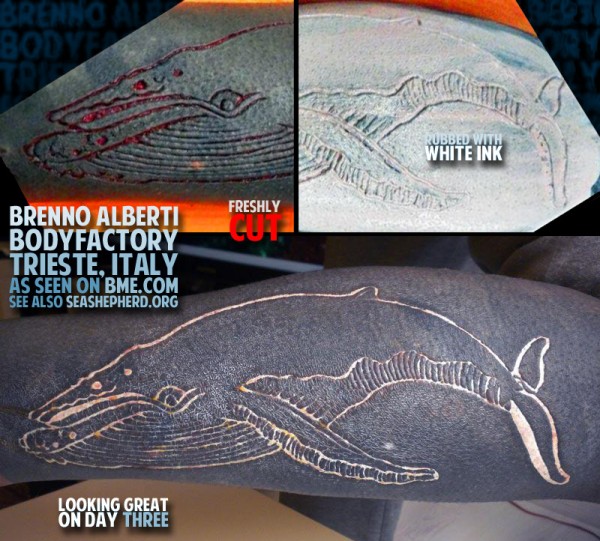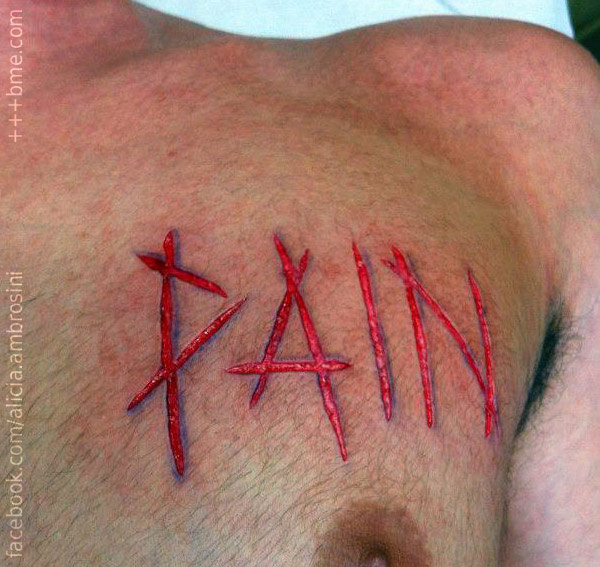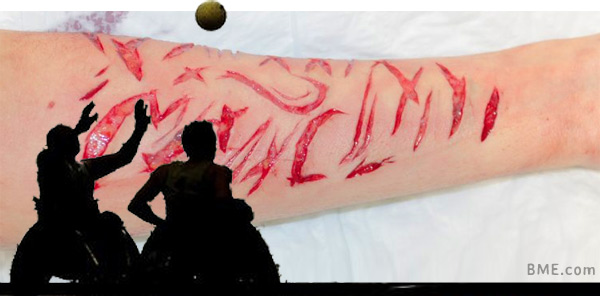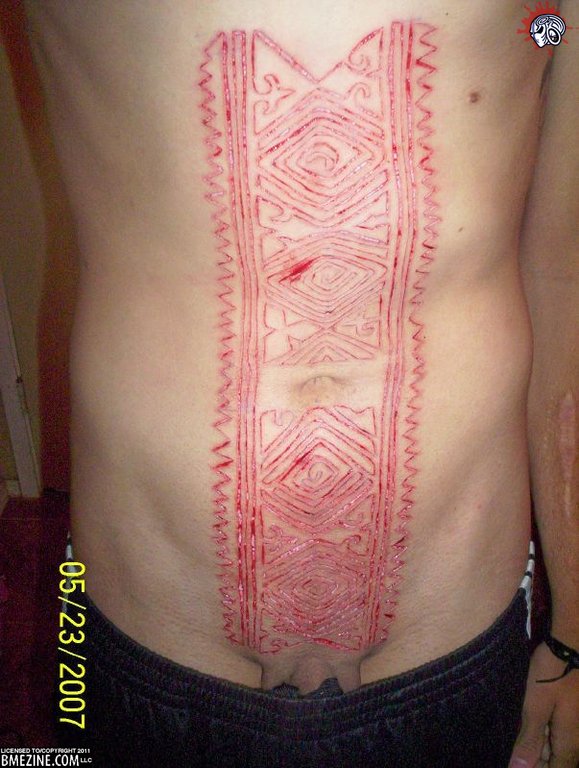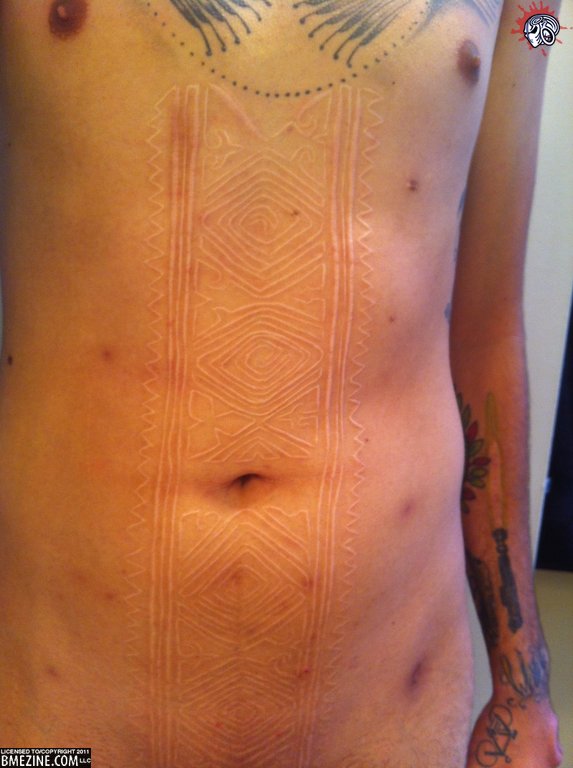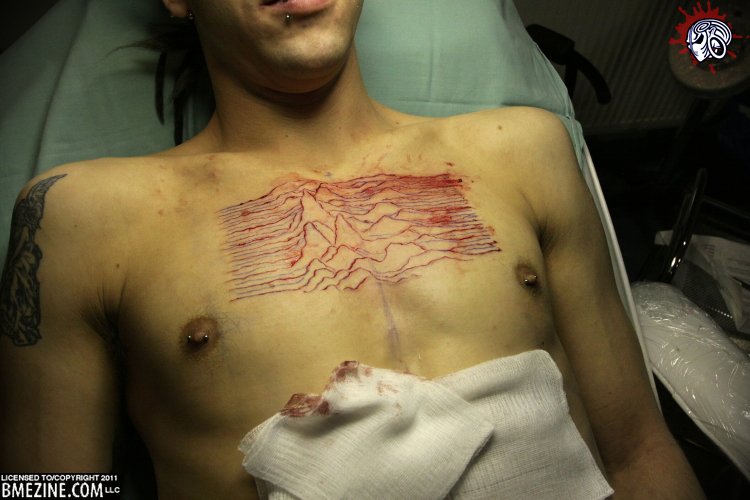One of the problems with scars is the way they change over age. Scars in general begin as red or pink wounds, staying quite dark for the first period of their existence, sometimes raising up as well (often unevenly) depending on the part of the body and the individual’s genetic. Over time, the scars lighten and fade, sometimes back to a natural color, or sometimes to a very pale color. This can happen inconsistently across the design, the result being that viewers who once saw the scar as beautiful and impressive are no longer so admiring, to put it gently.
I’d suggest that in general there are three ways to deal with this reality — first of all, to ignore it. After all, body art, especially scars, is most of an individualistic experience and what matters most is how the individual feels about the scar and that doesn’t have to change as the piece ages any more than people have to fall out of love as their spouse ages. The second way to deal with it is to use tattooing to scaffold the piece, to give it new definition as the original linework and design loses its power. I’ve posted scar/tattoo combos many times, but here’s one that was just done, the tattoo addition by Maartje Verstegen at Turnhout, Belgium’s Pirate Piercing (piratepiercing.be).
The third way approach is to design a piece that looks good at all stages. You could argue that this imposes significant limitations on the artform, but on the other hand, you could say that to ignore those limitations and to treat scarification as something it isn’t (ie. scars aren’t tattoos) is the real problem. In general, this means simple geometric or repeating designs that are highly resilient to changes in the scar. A good example of this is the work of Iestyn Flye (search for him on ModBlog), normally based out of London’s Divine Canvas (divine-canvas.com) although this piece I believe was done while touring. You can also find Iestyn at the 2013 London ScarCon in May (fresh back from Kathmandu, the Nepal Tattoo Convention, right after his London scarification seminar with Ron Garza).
